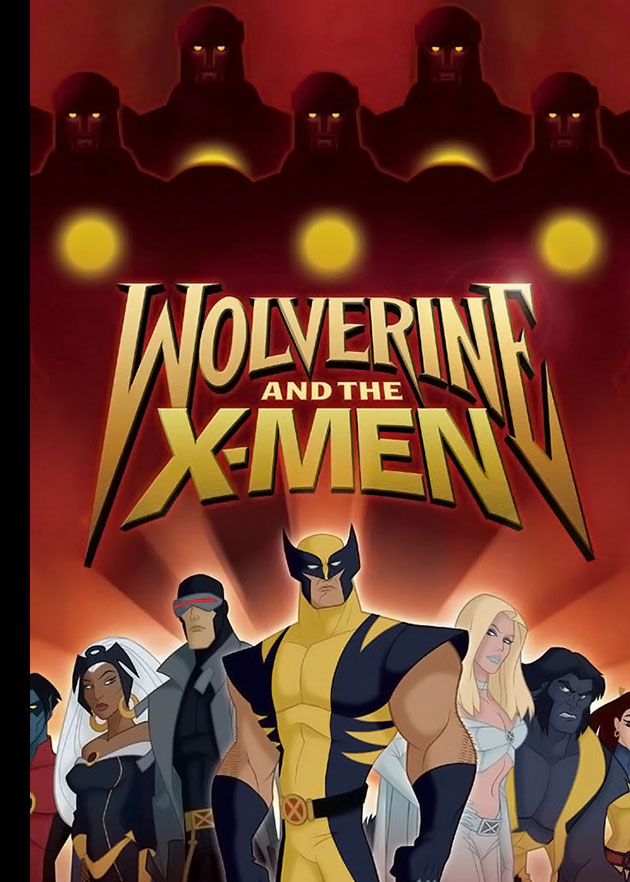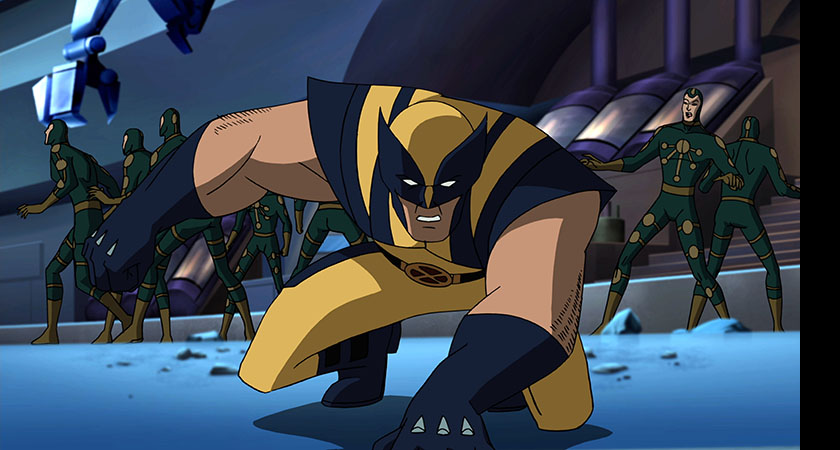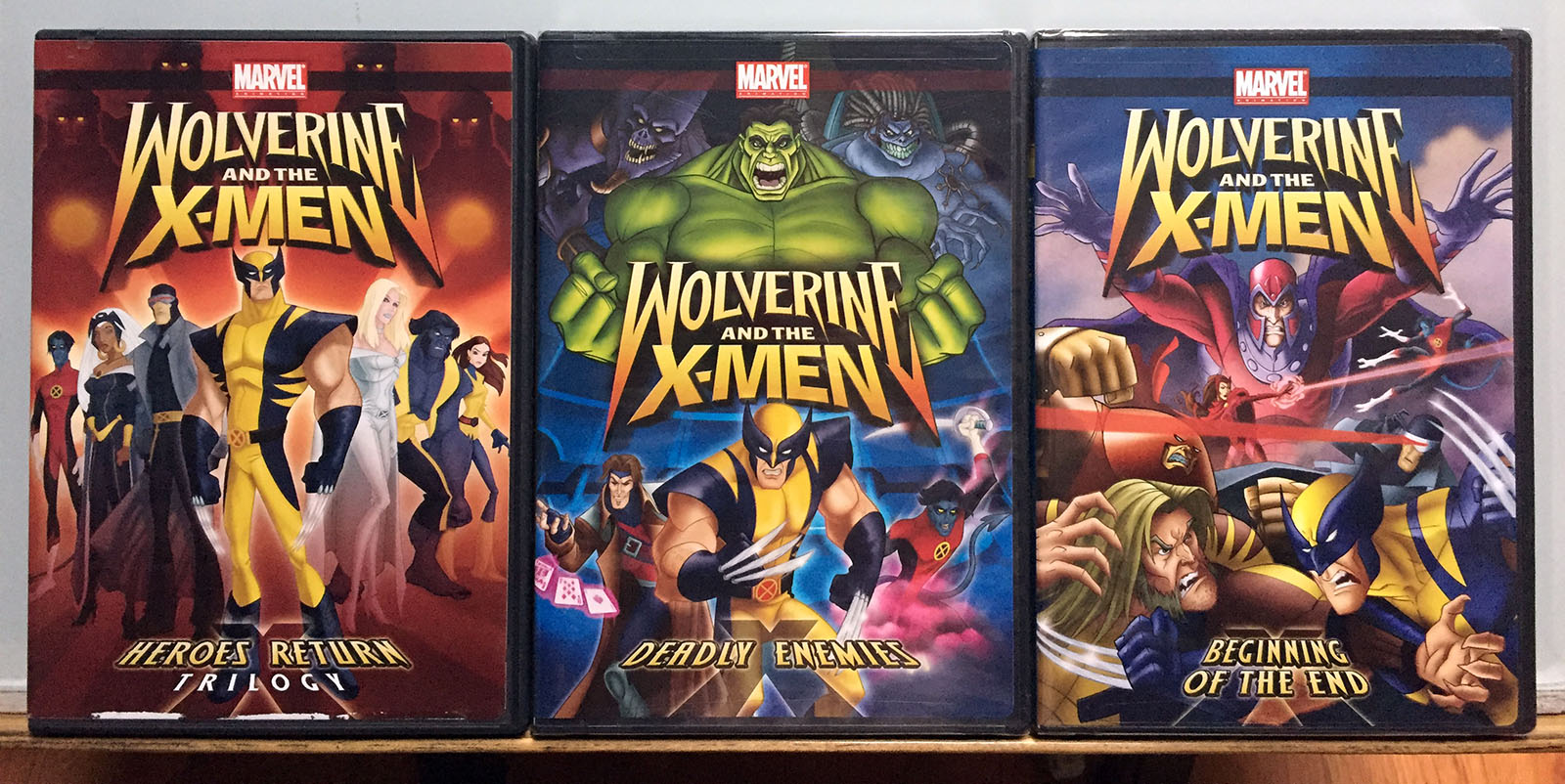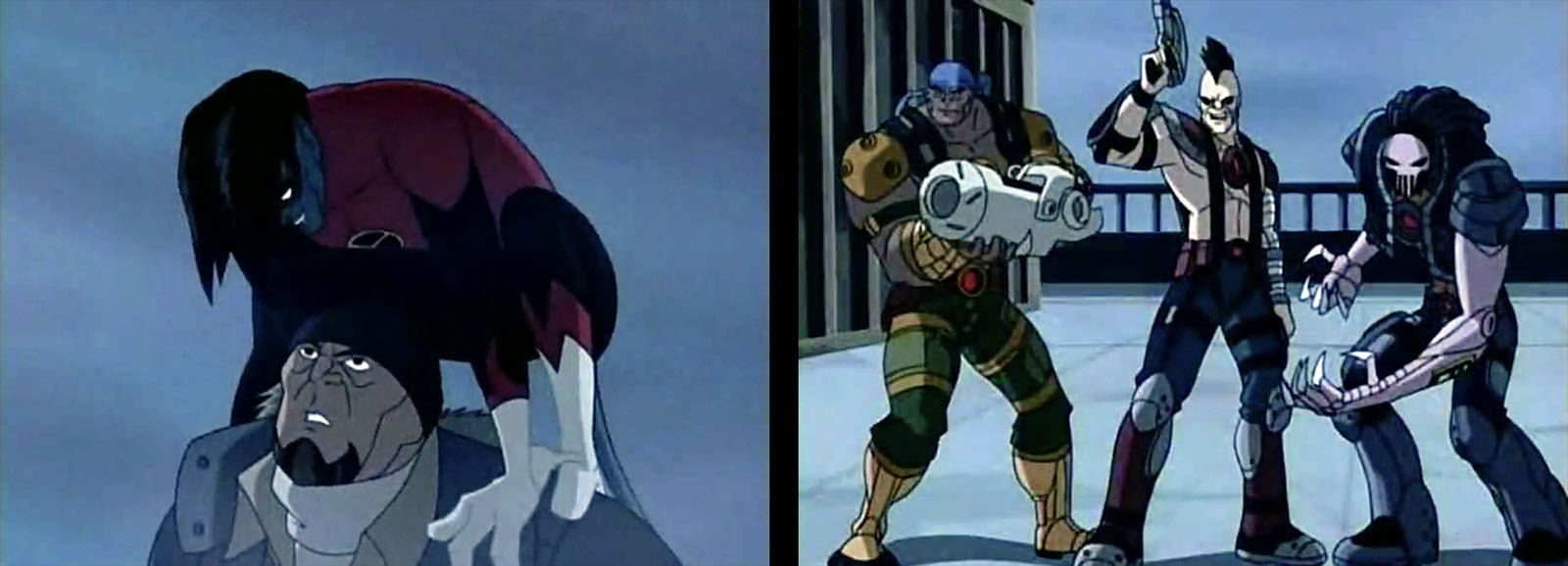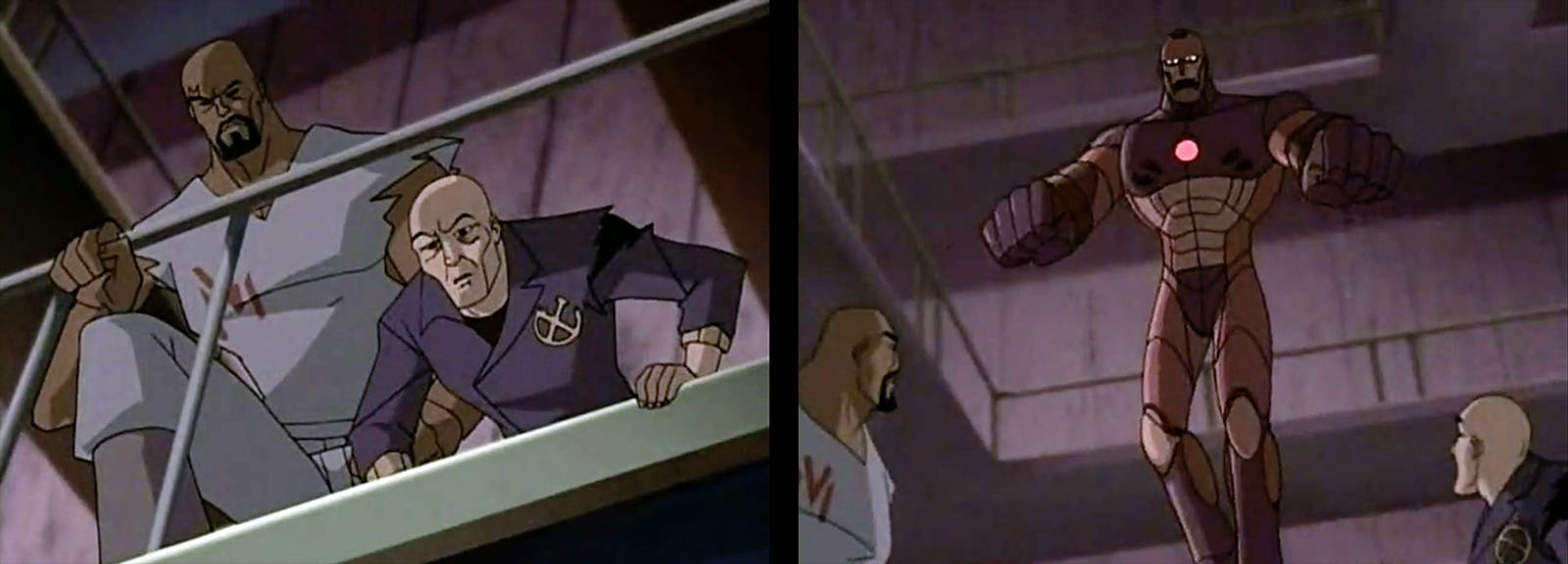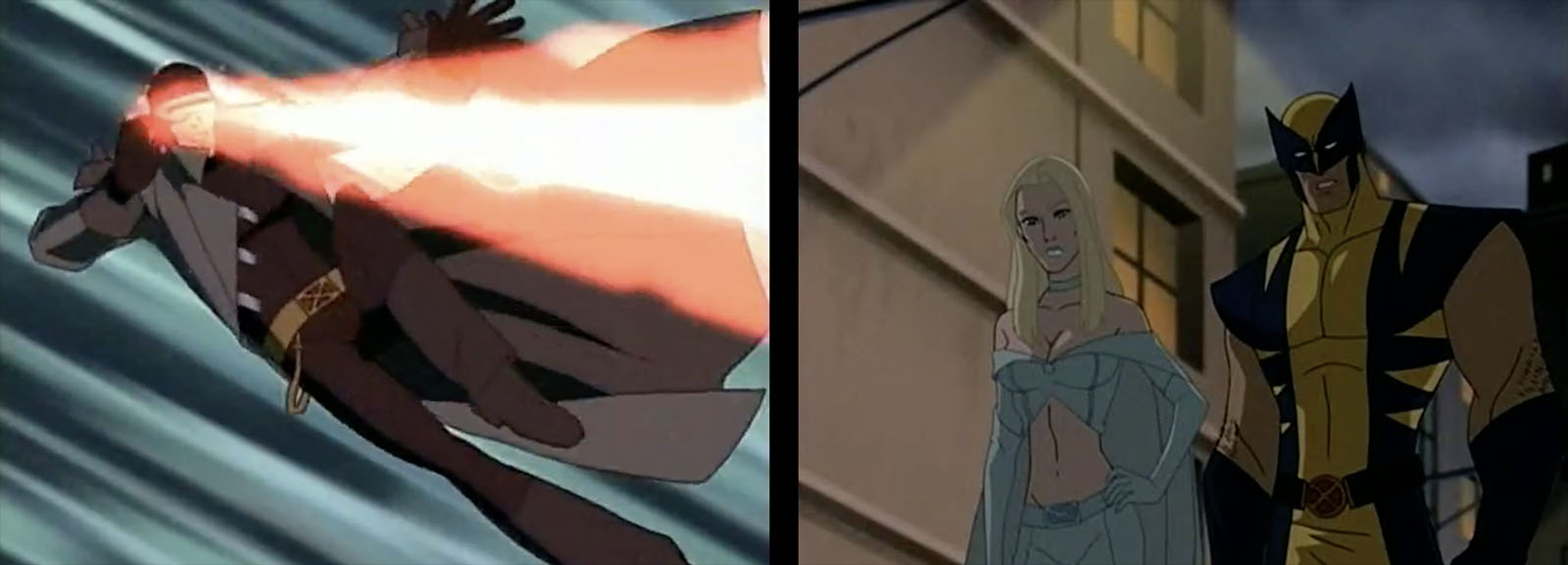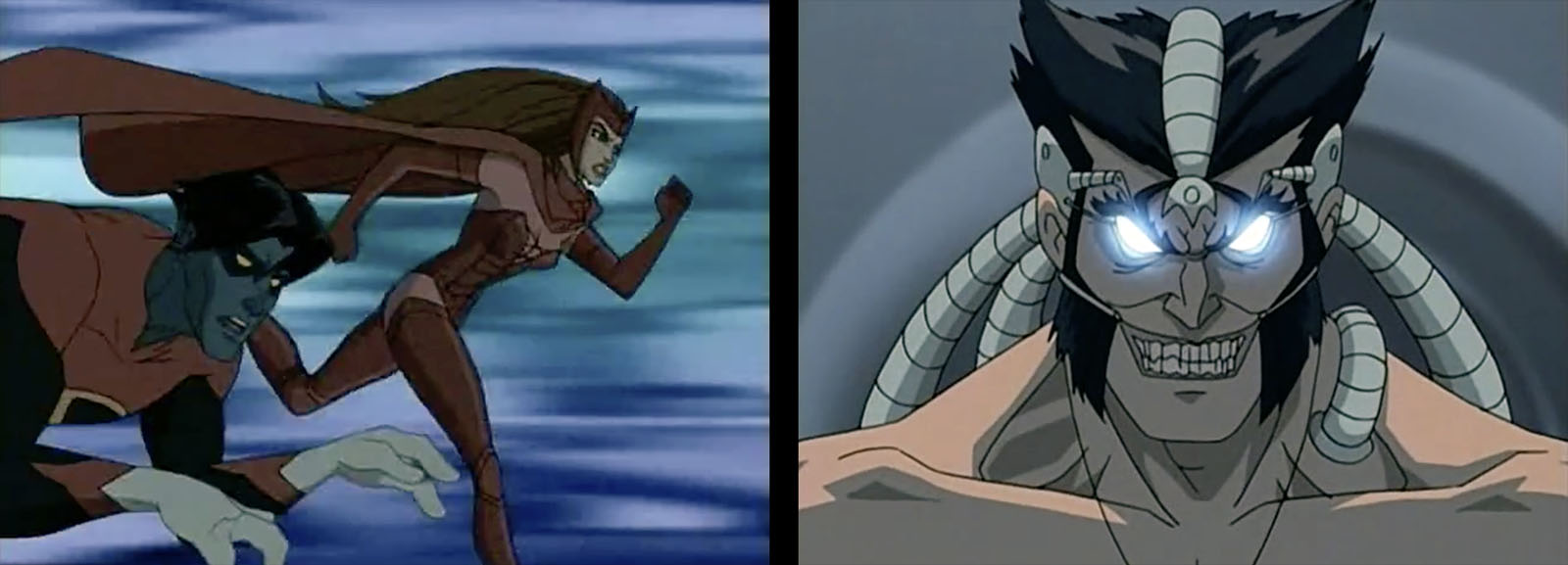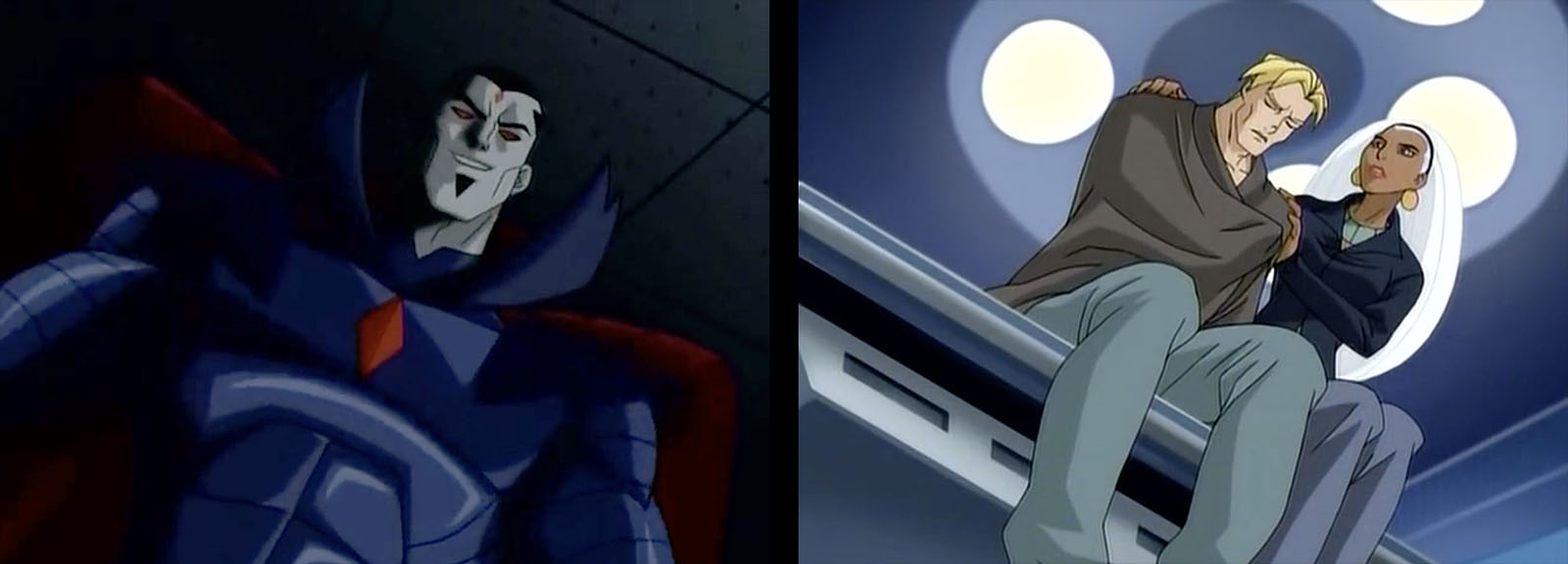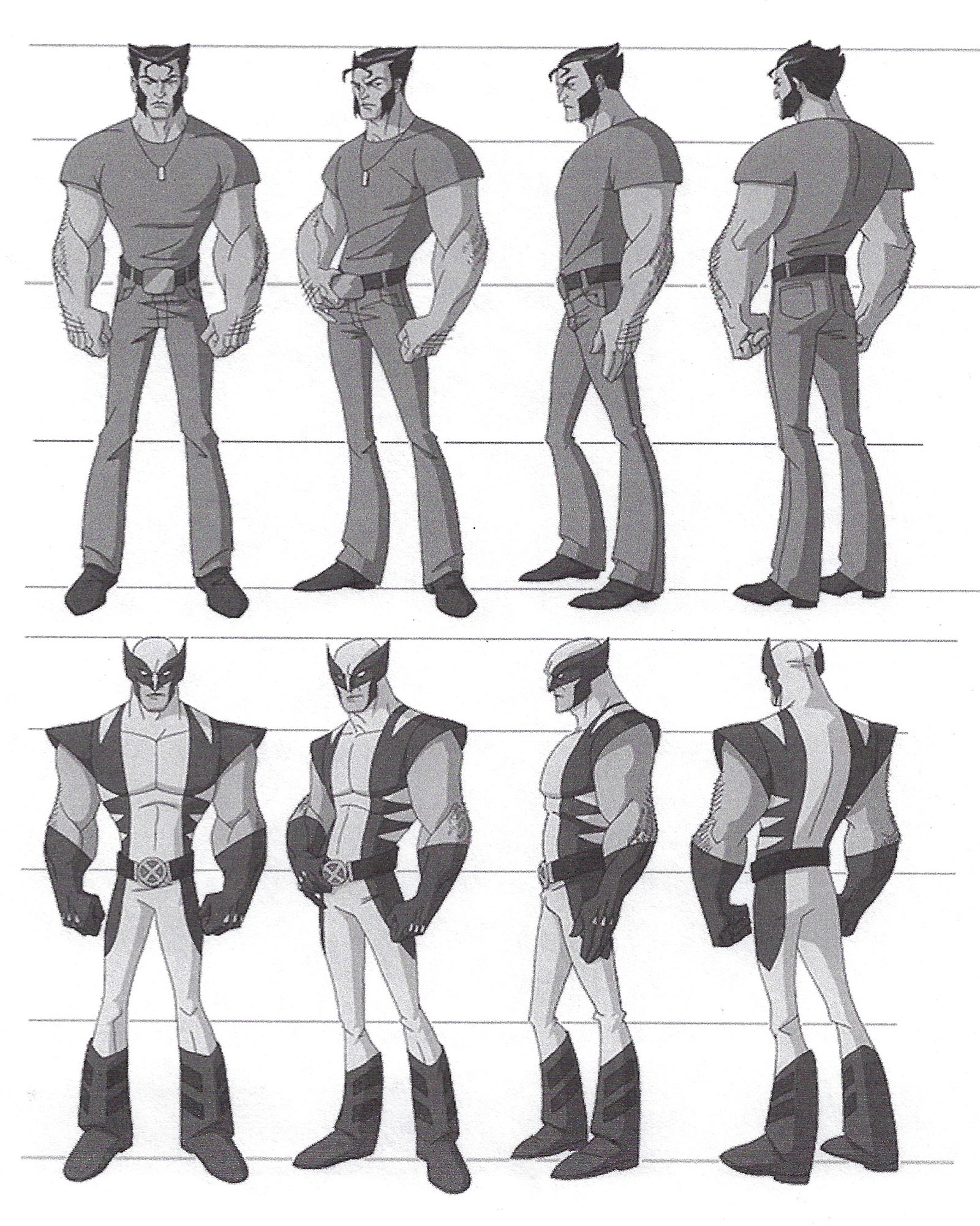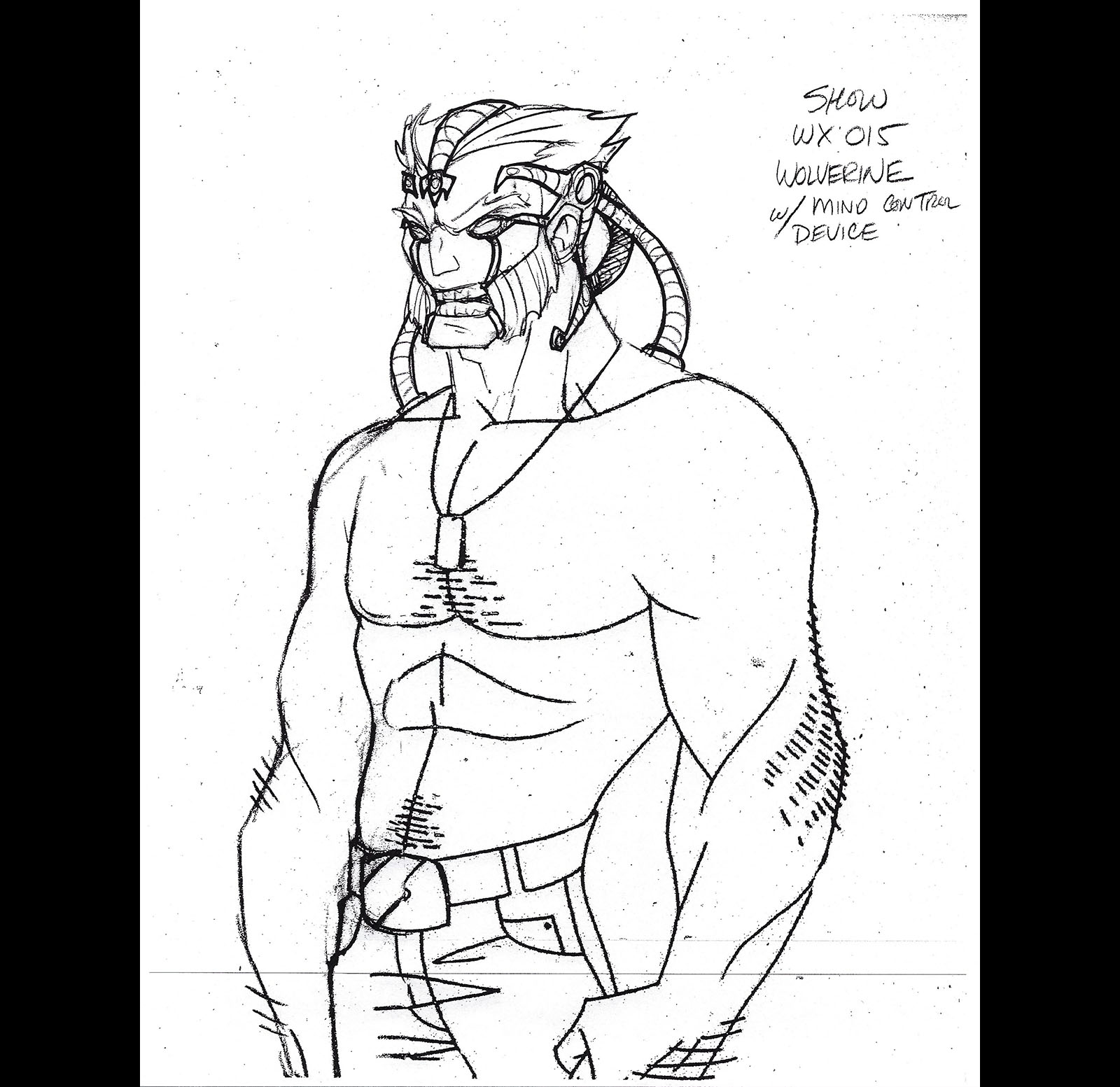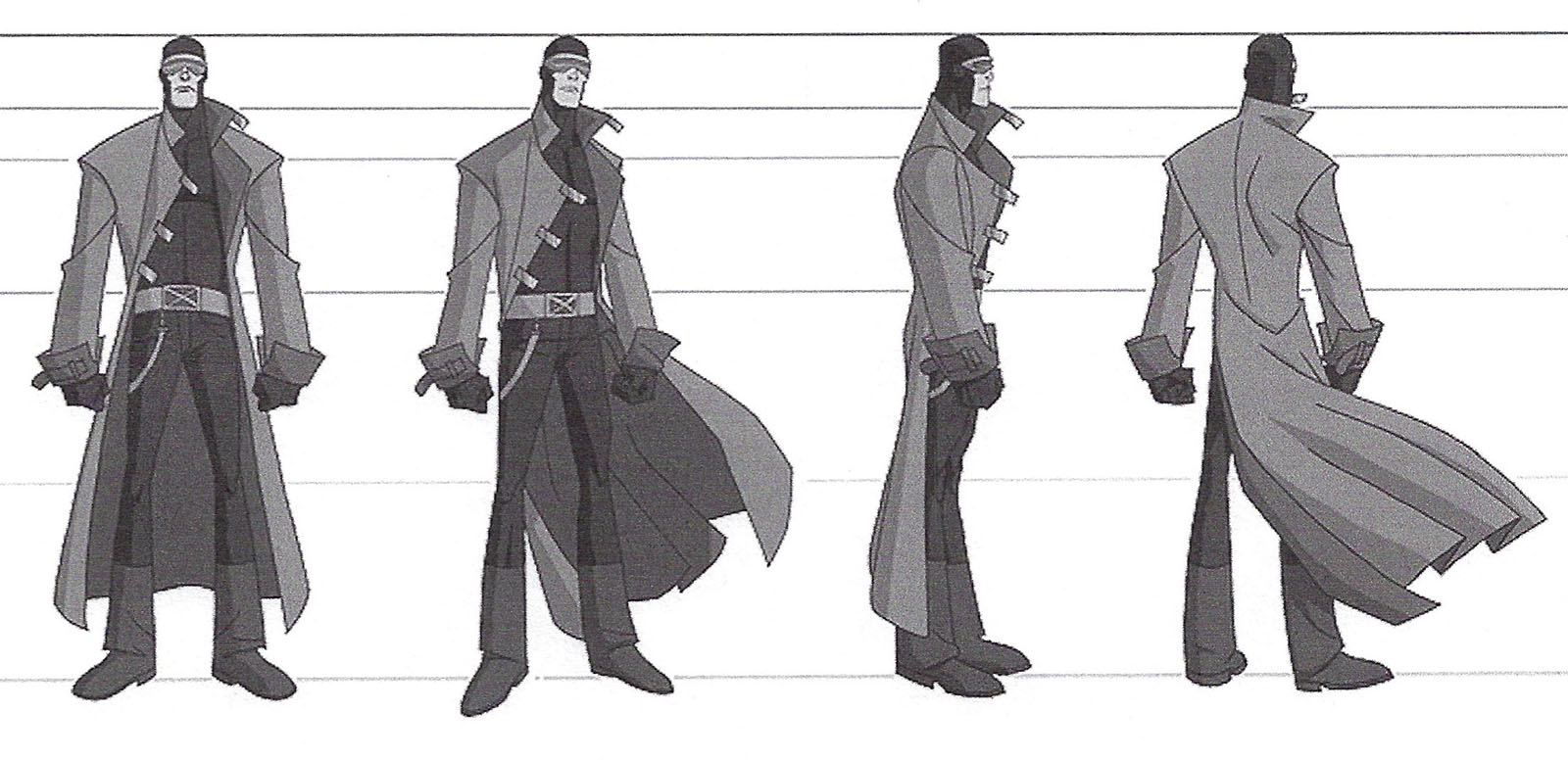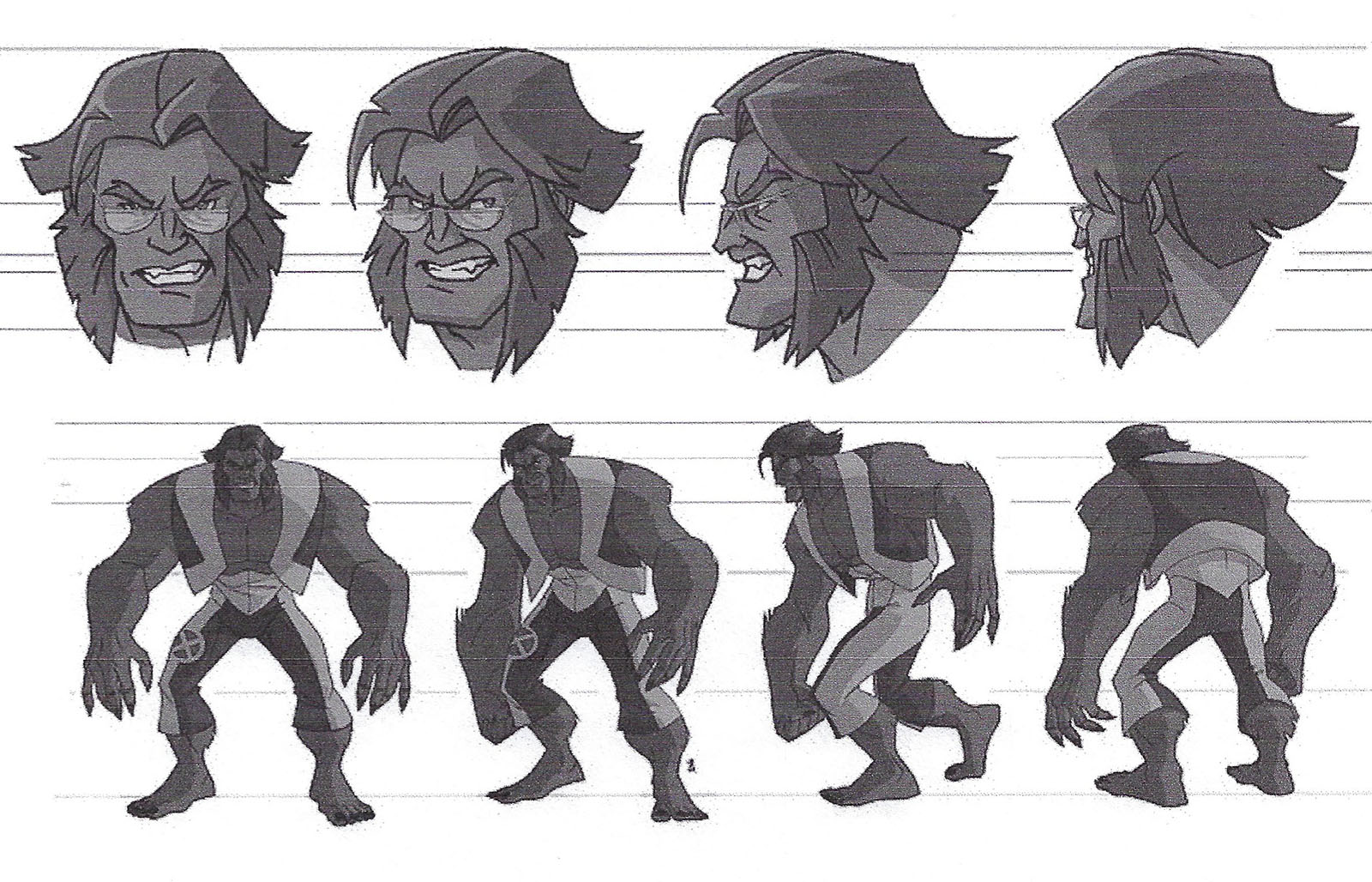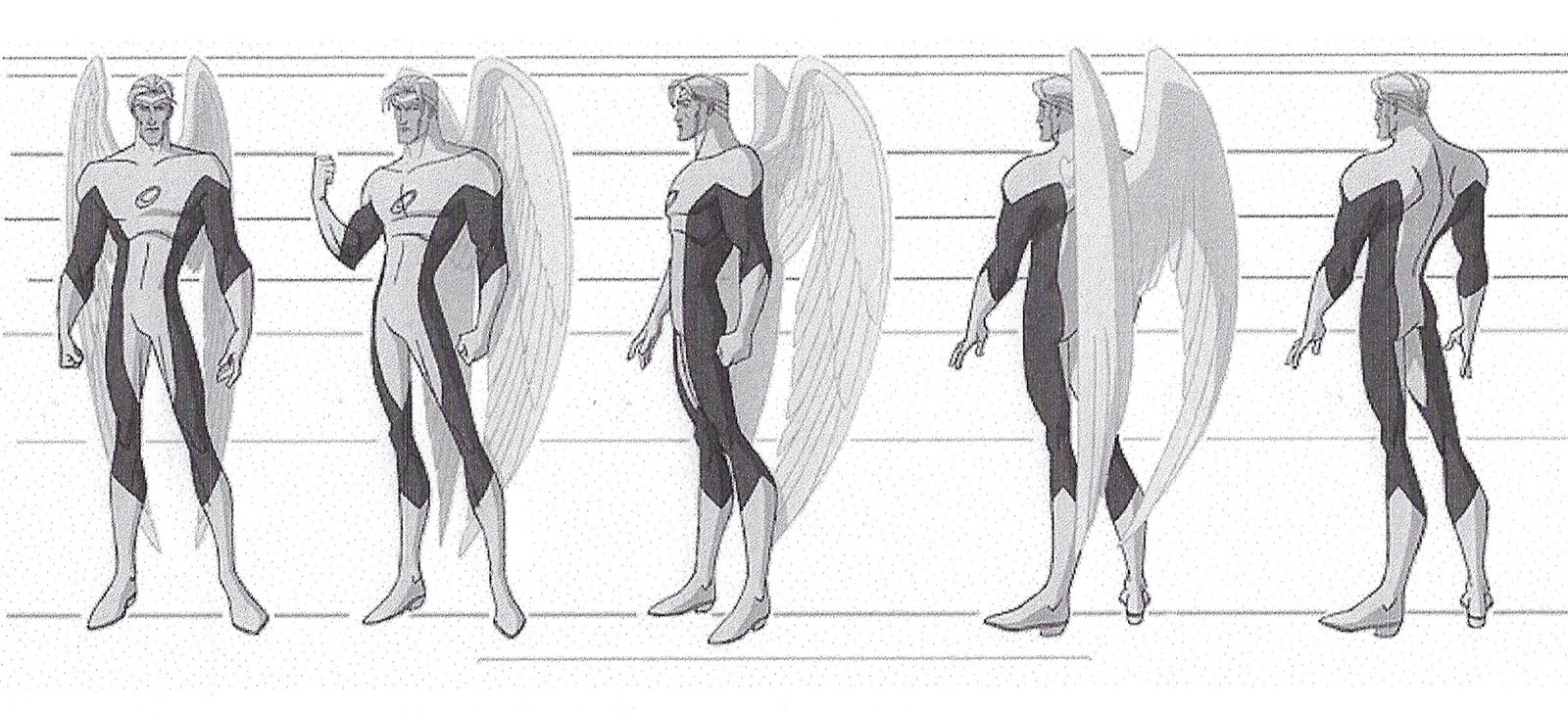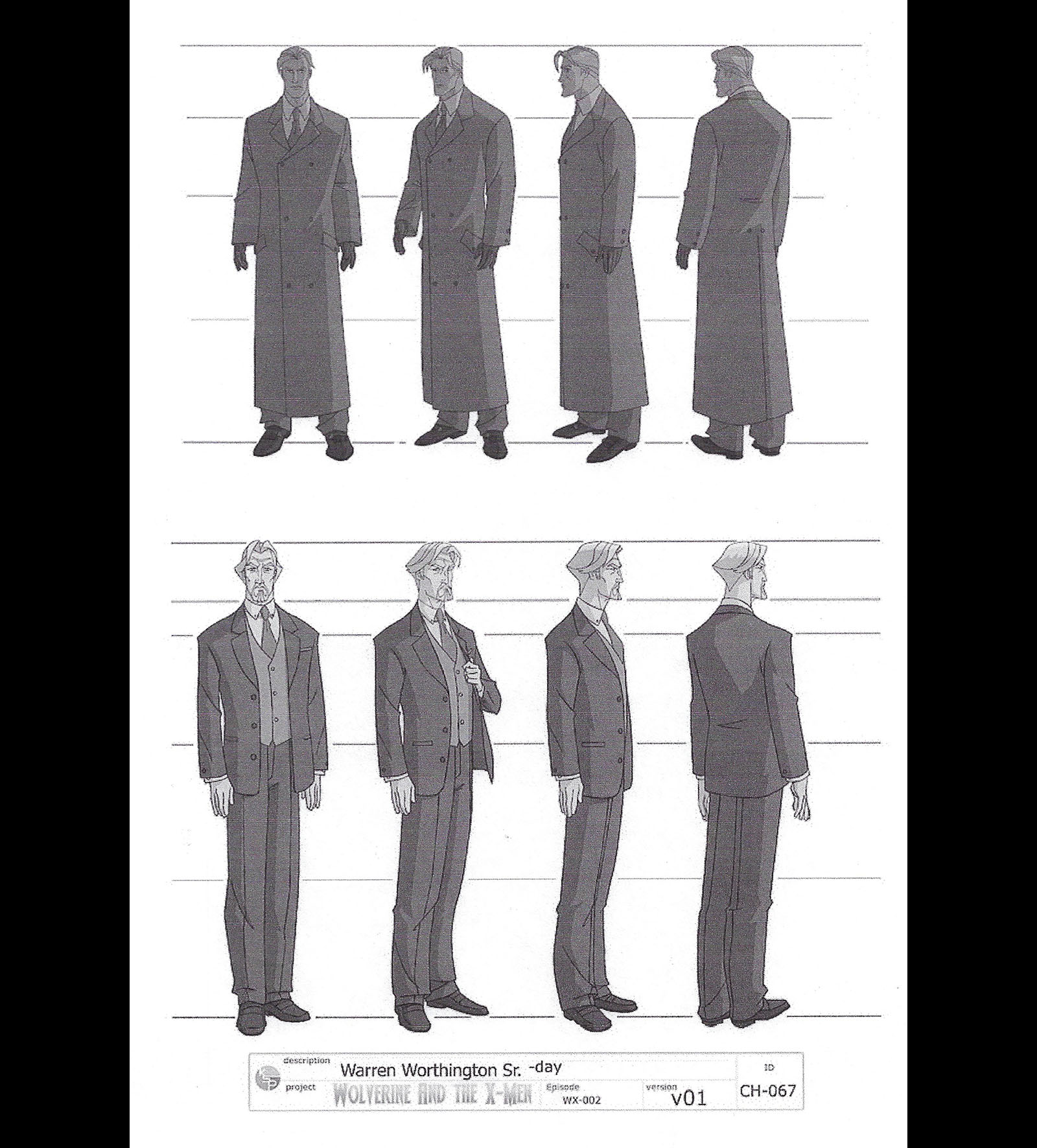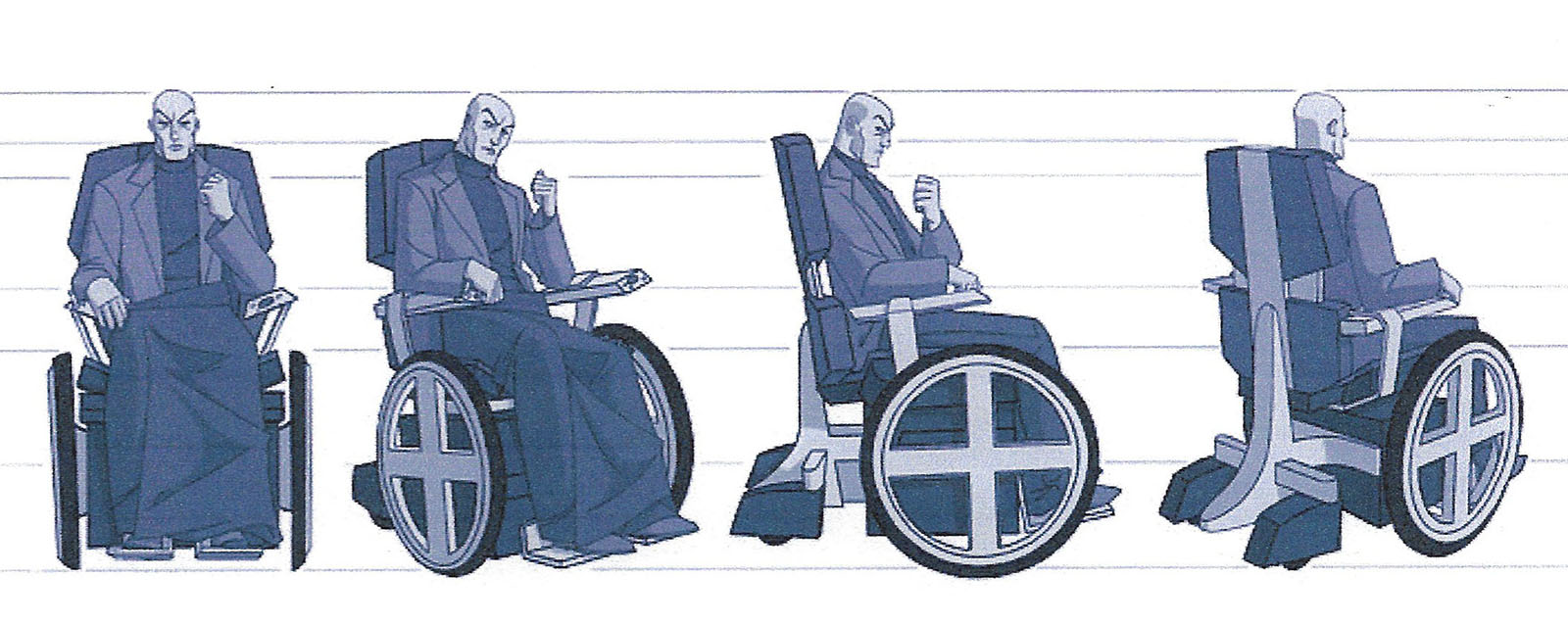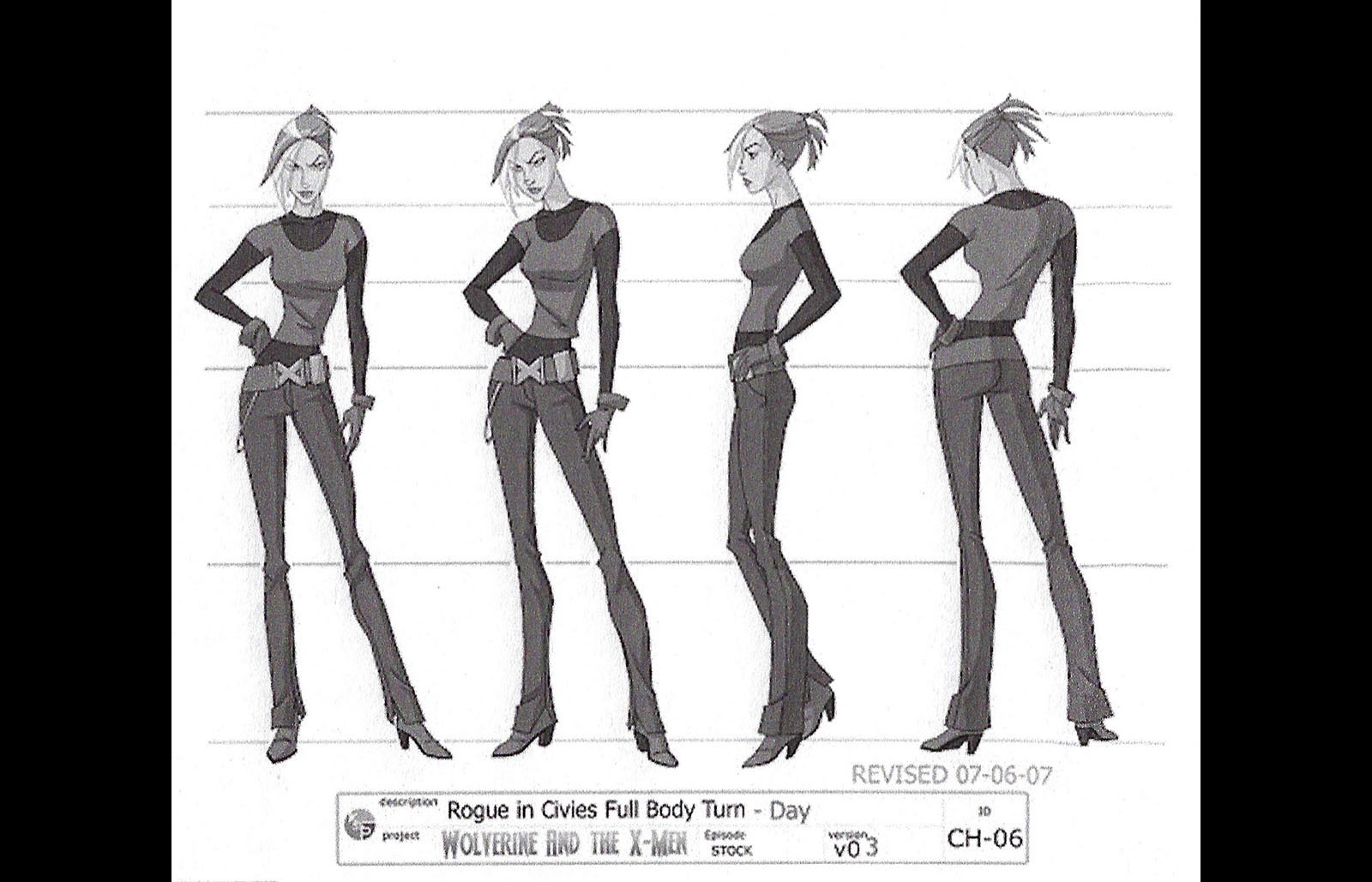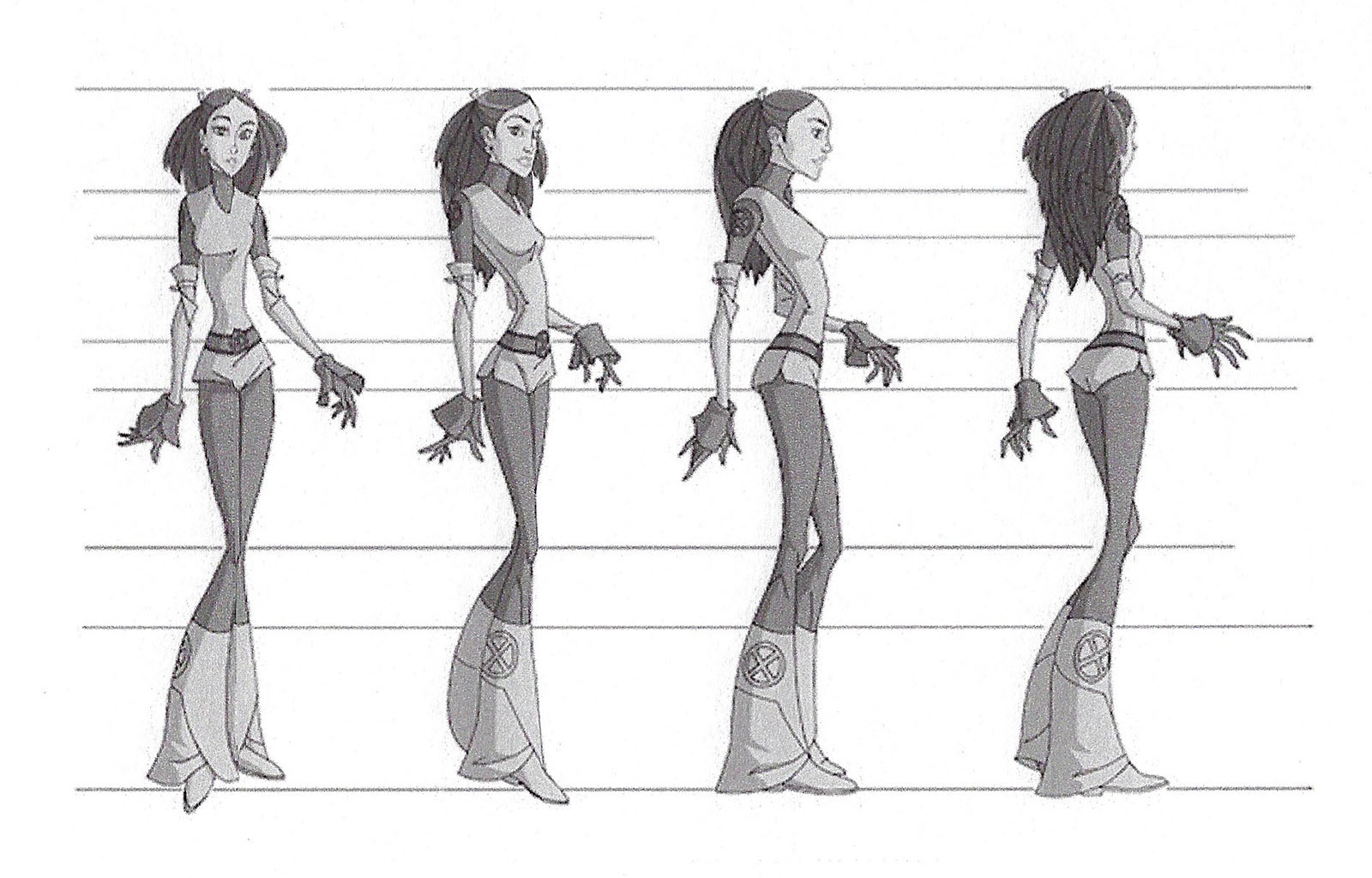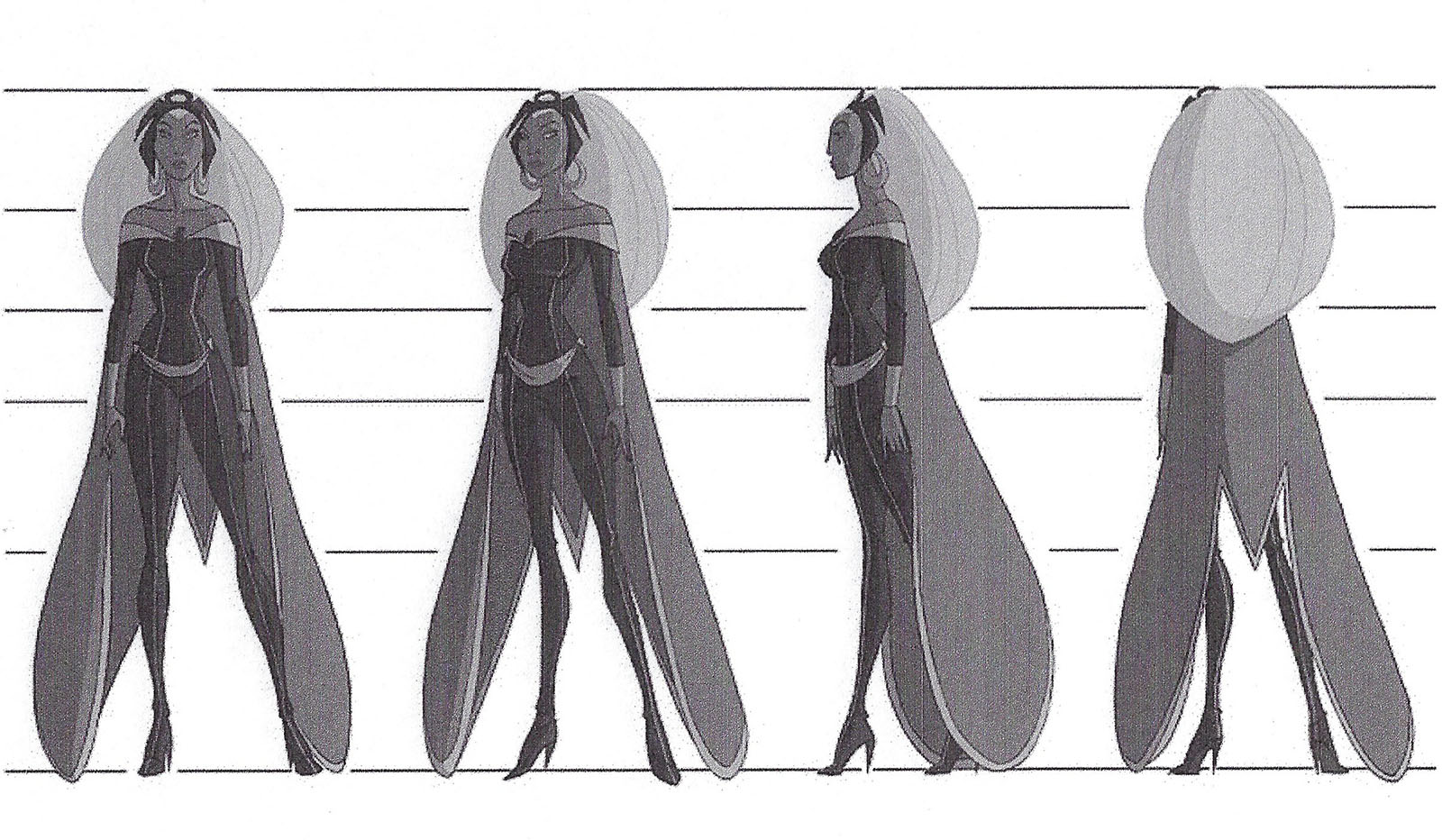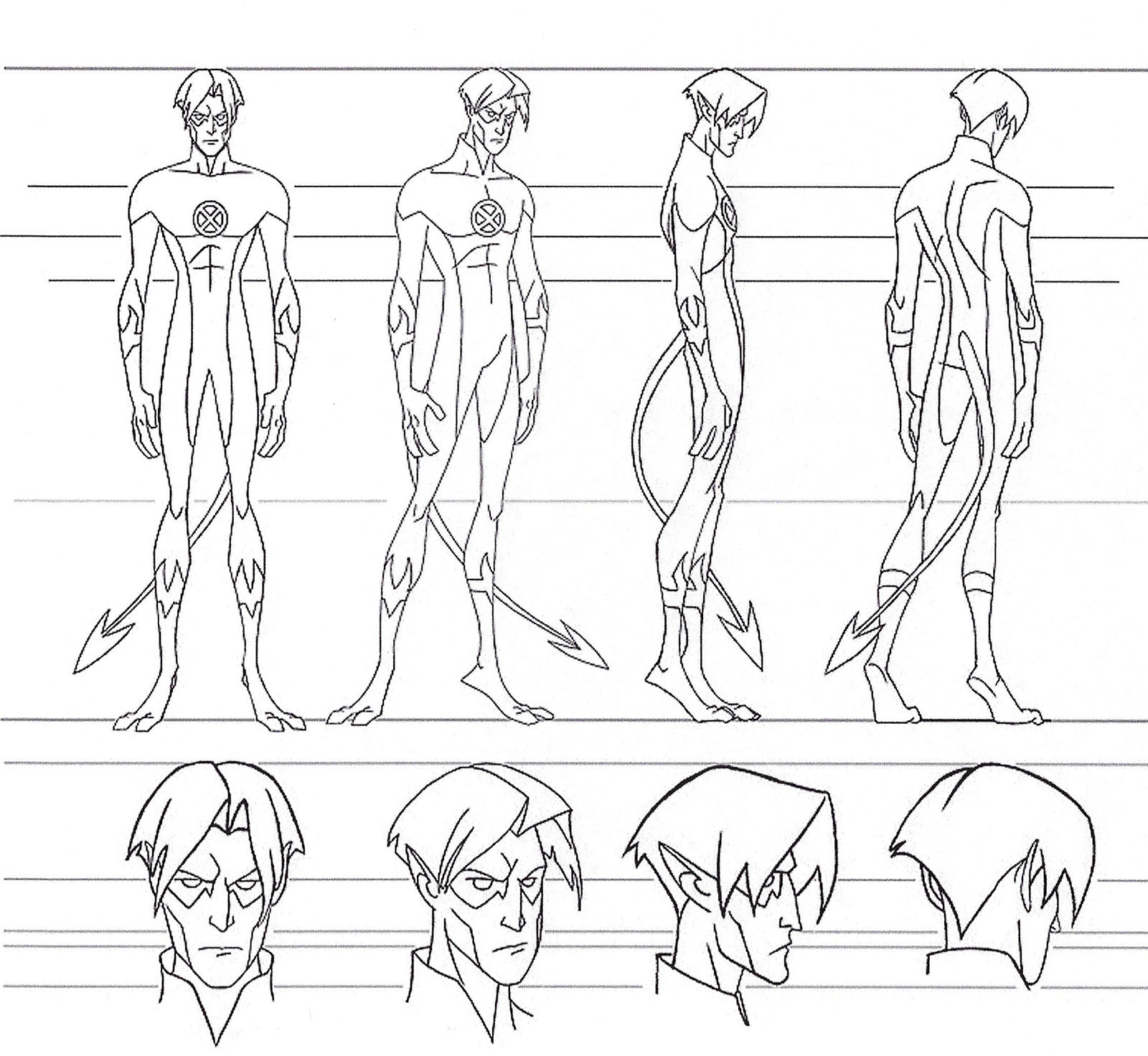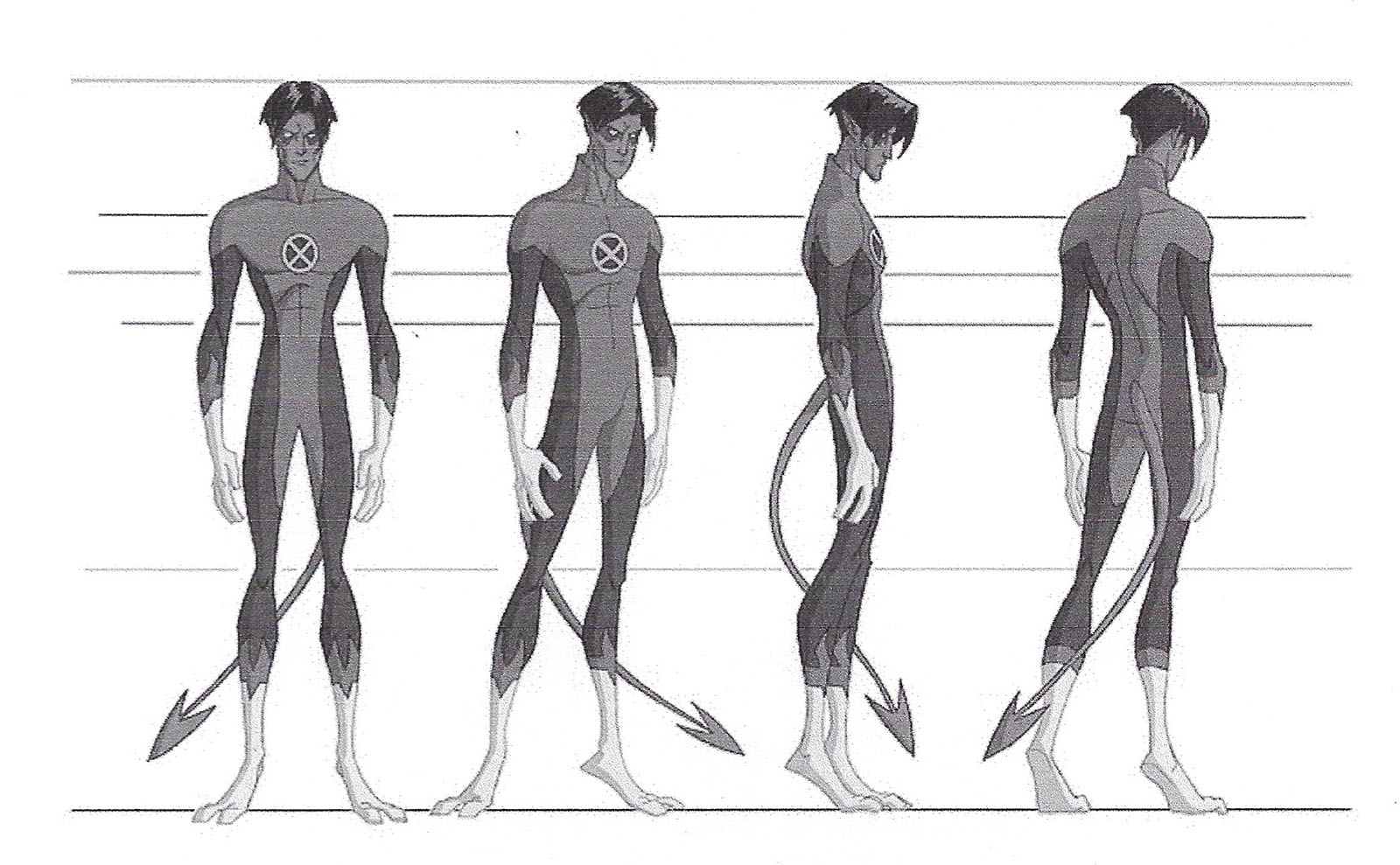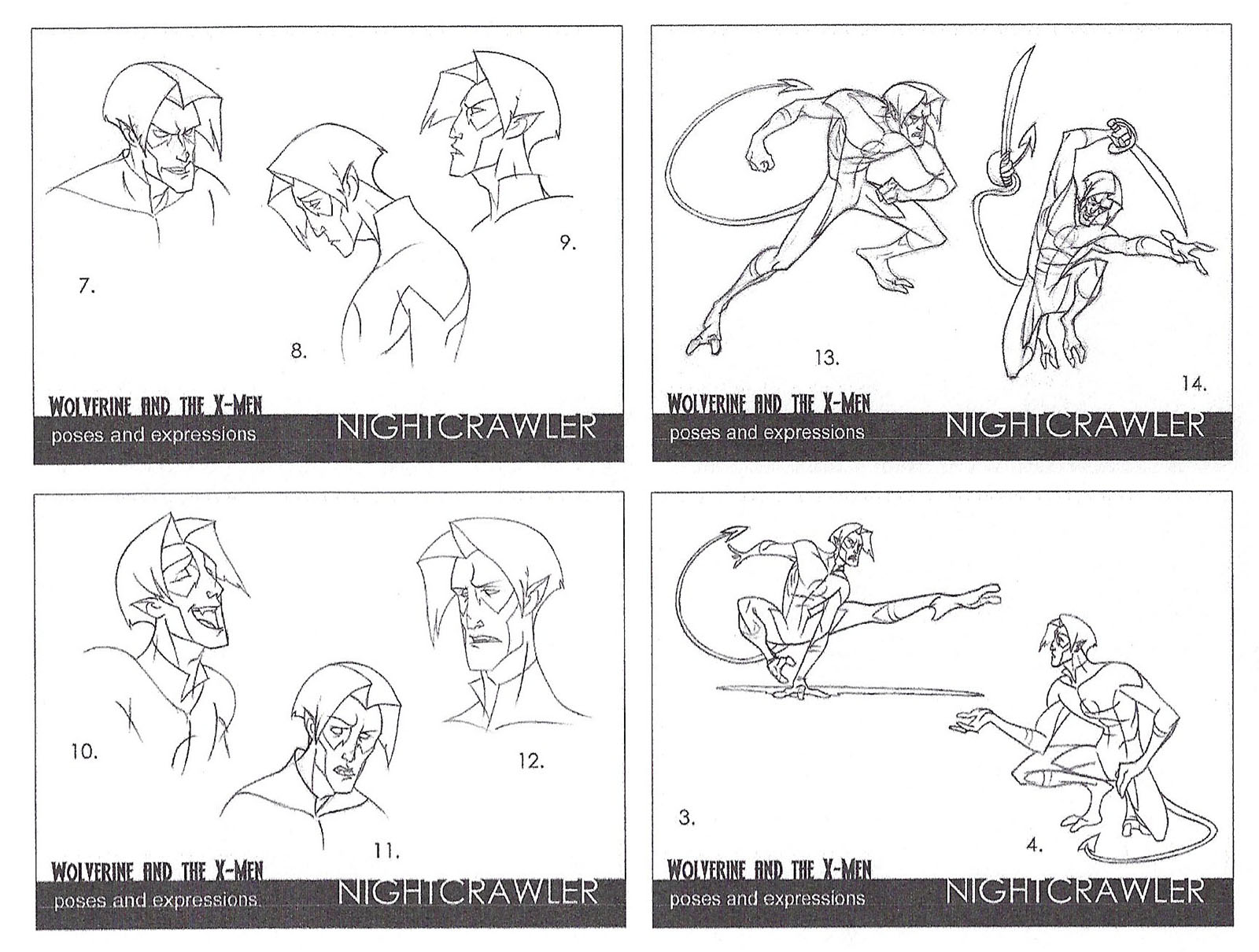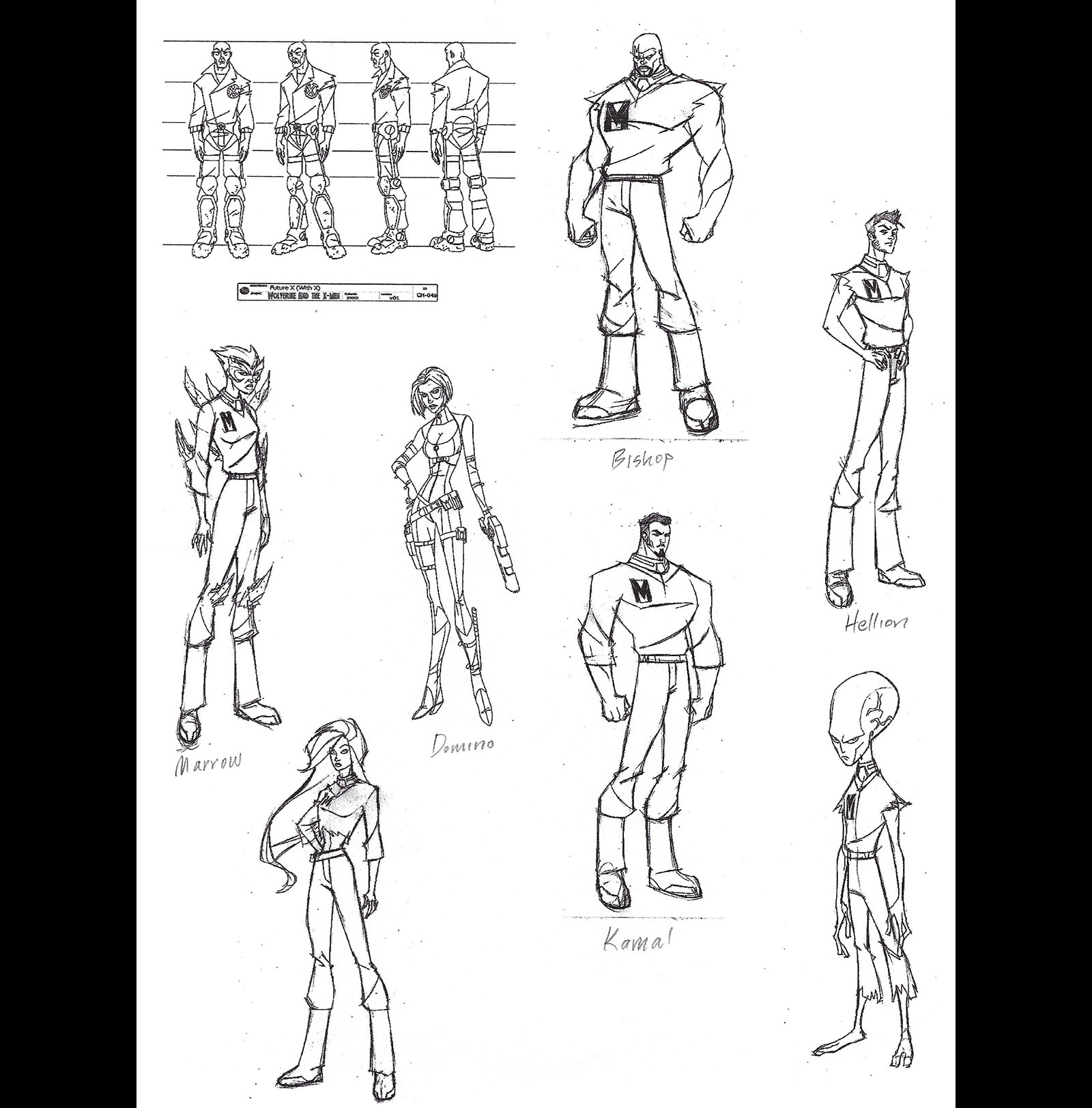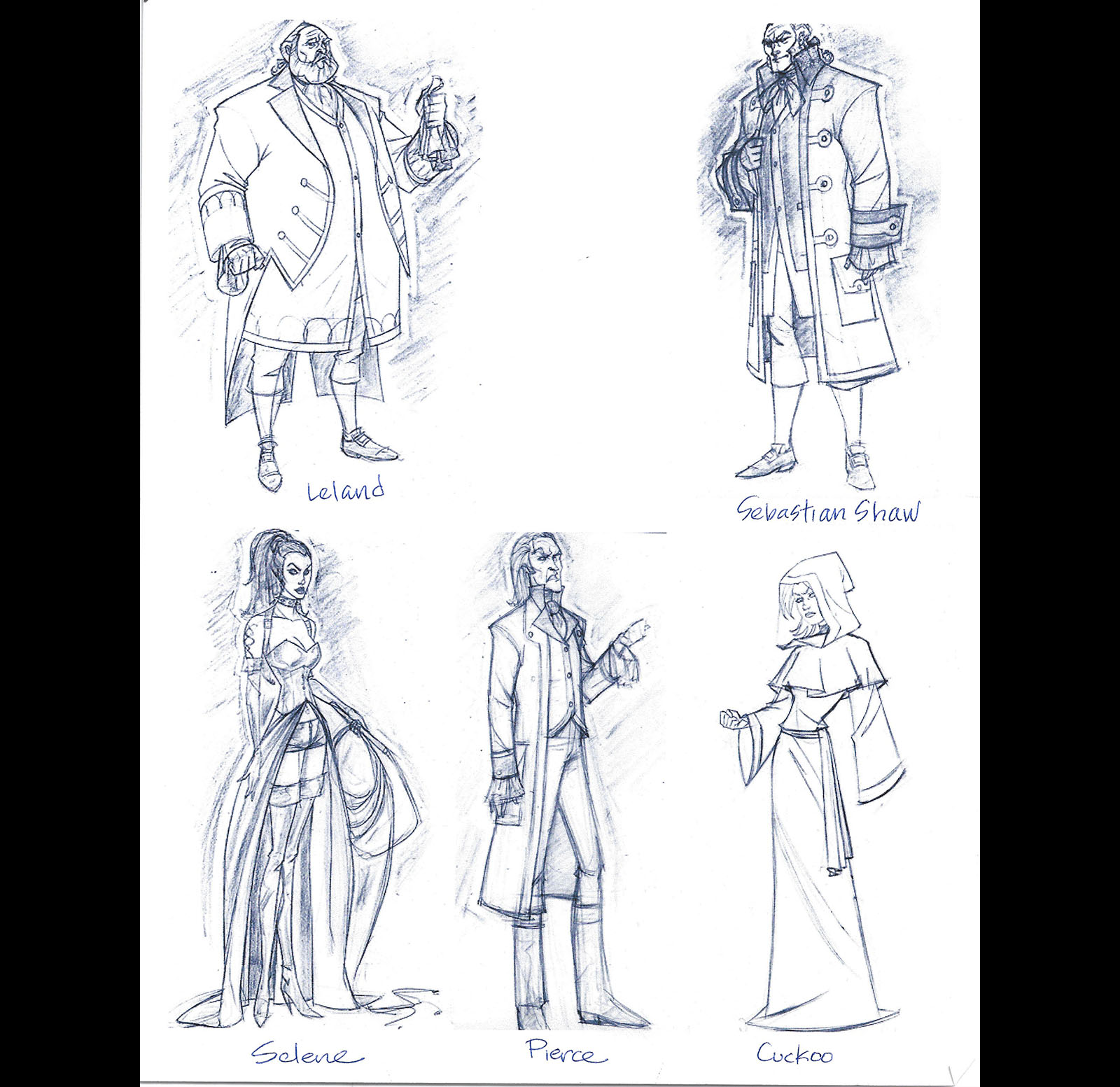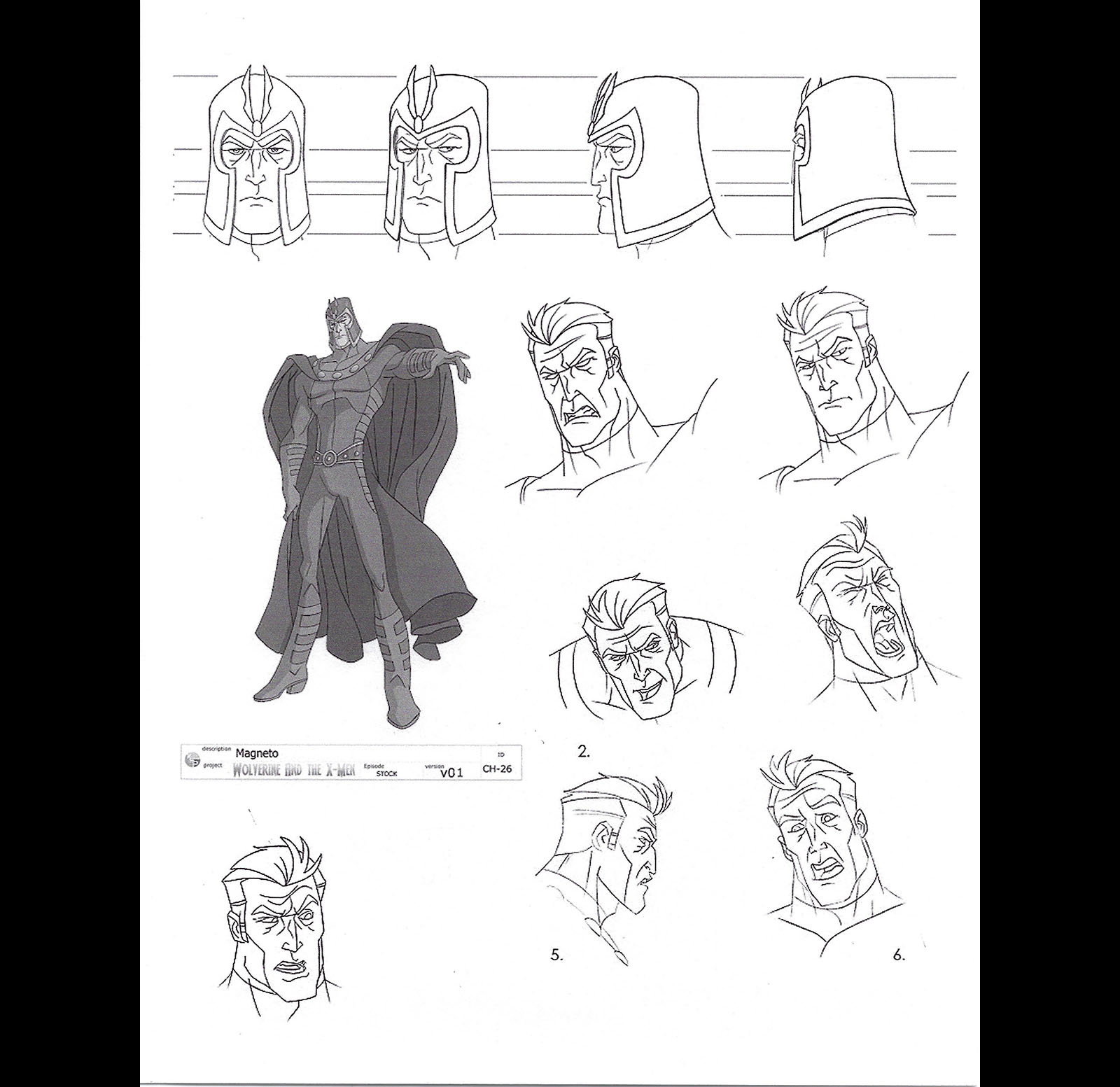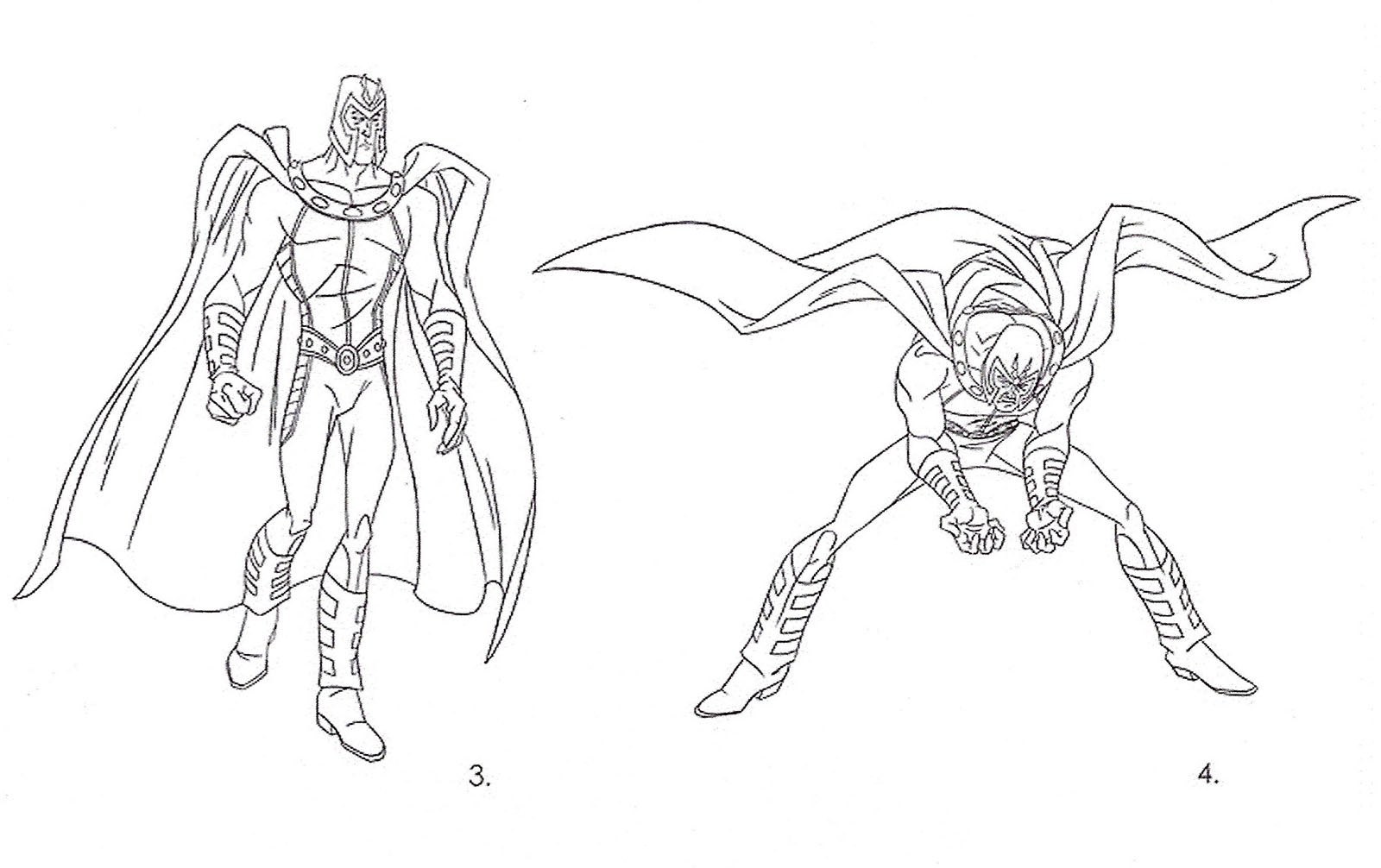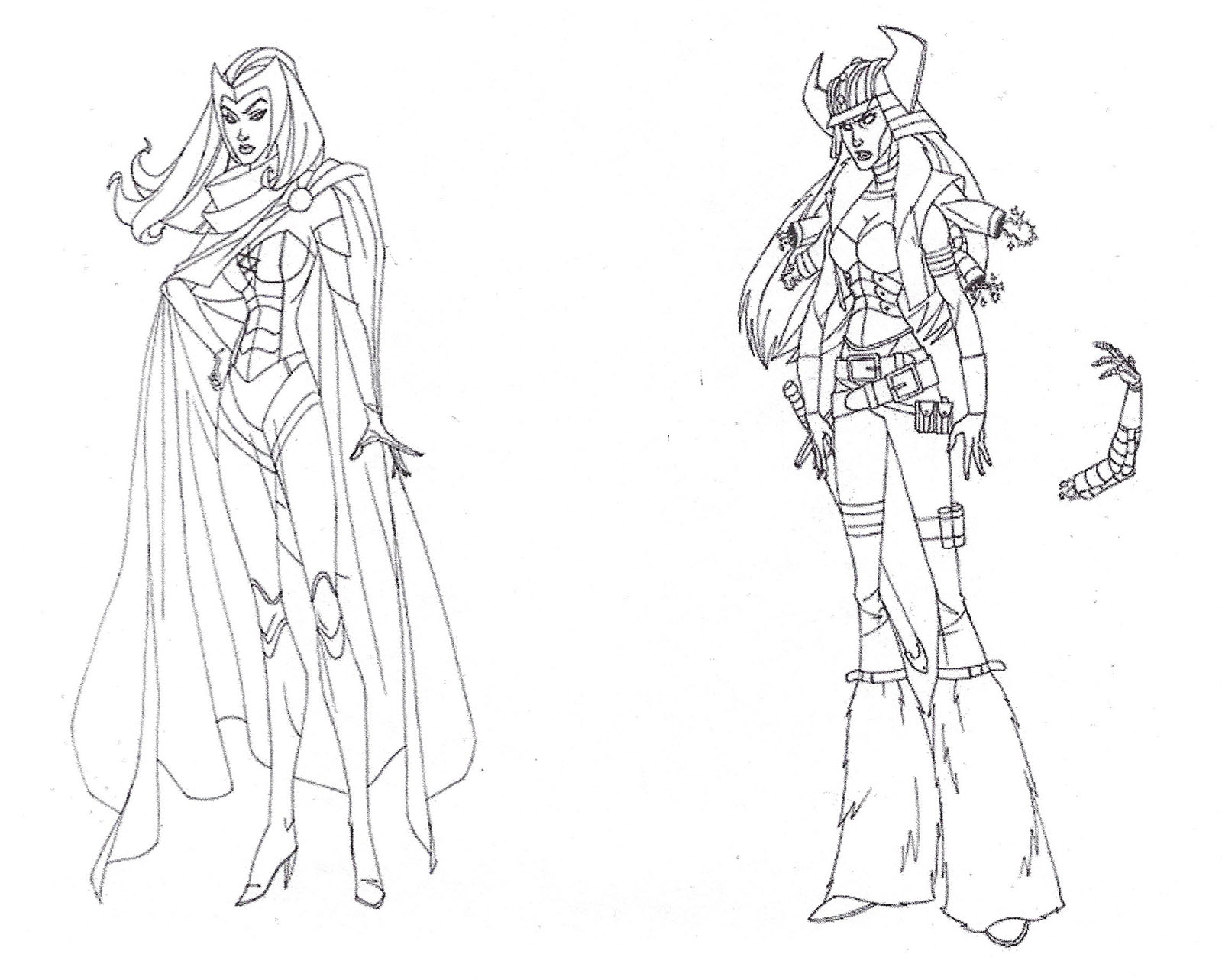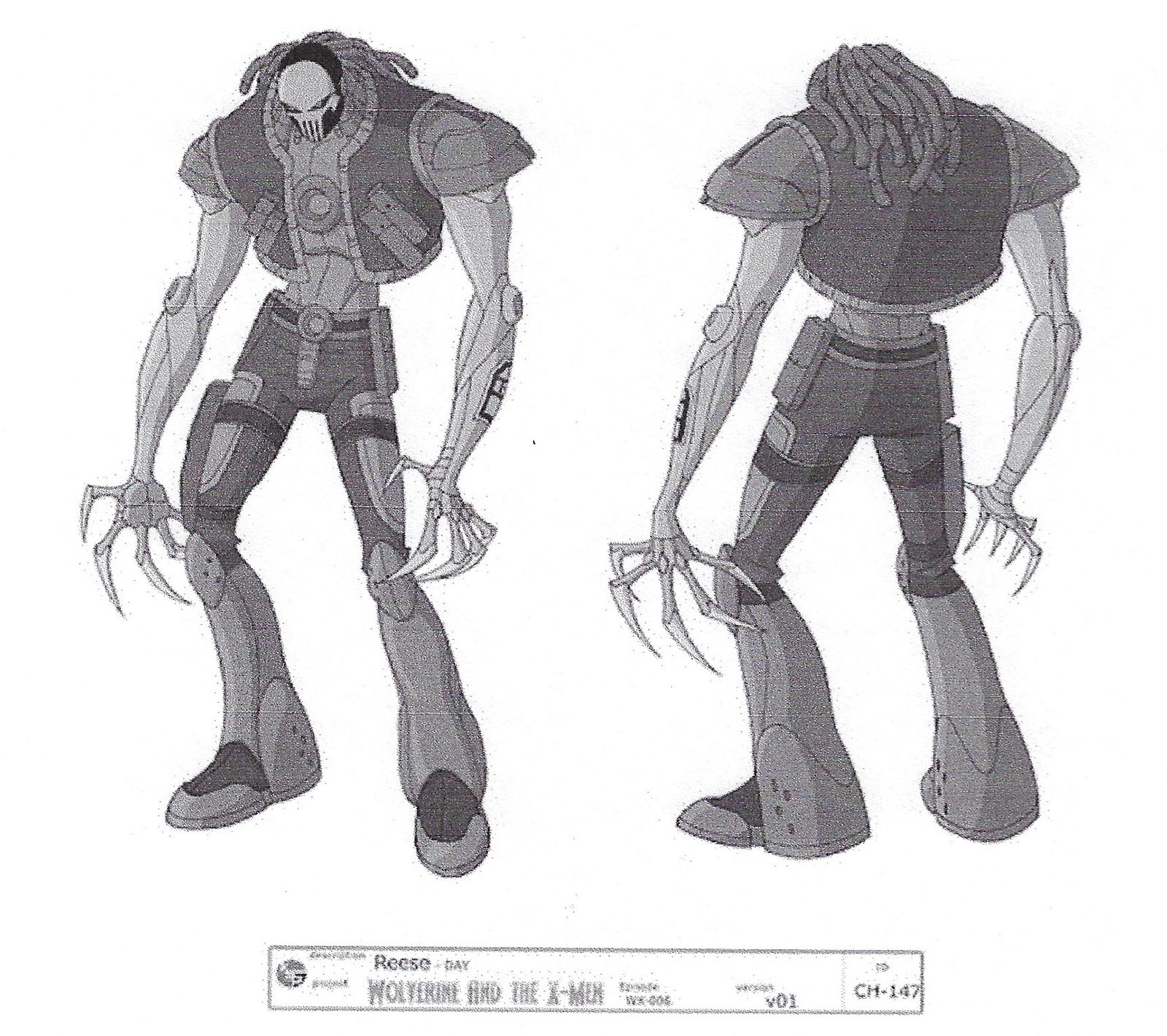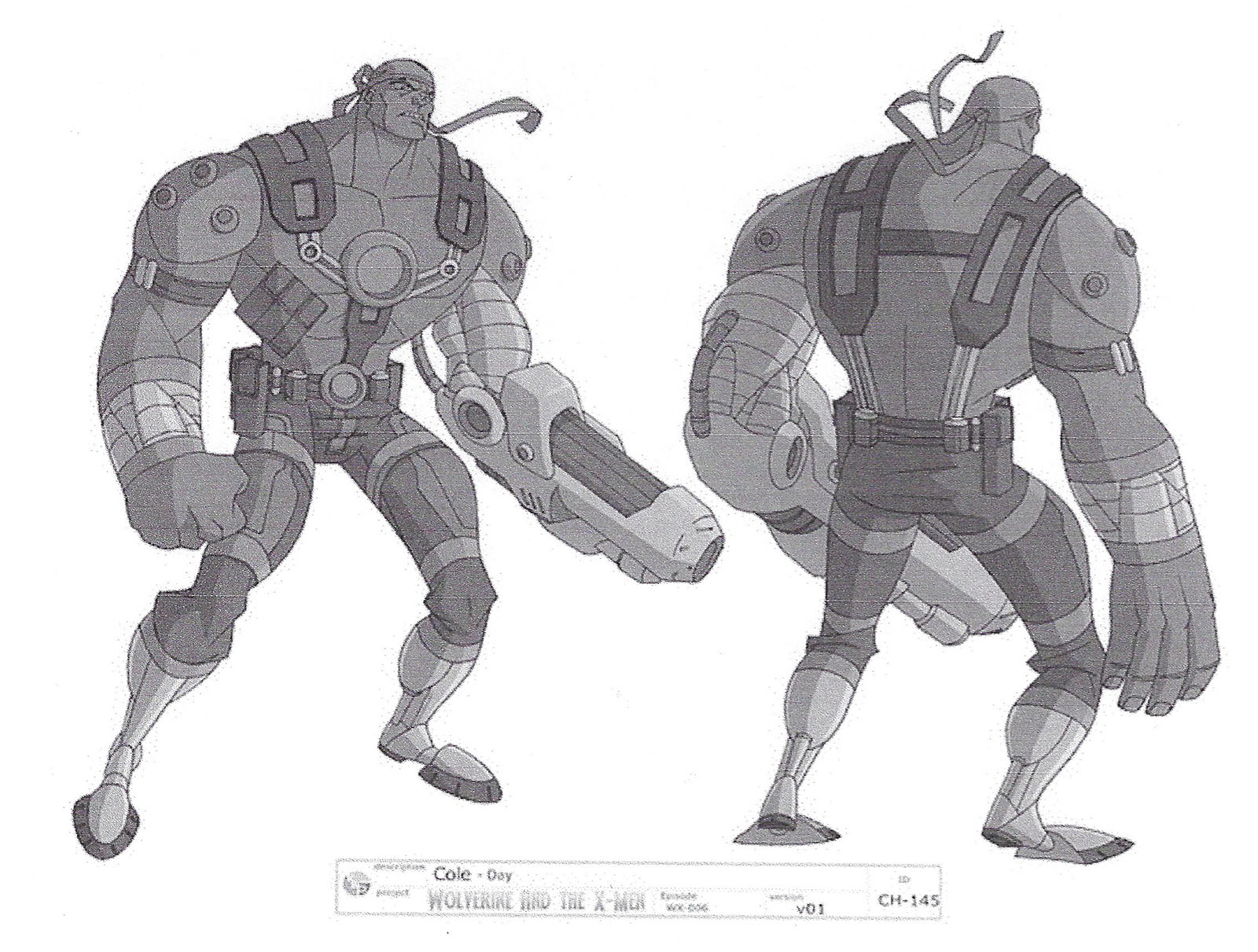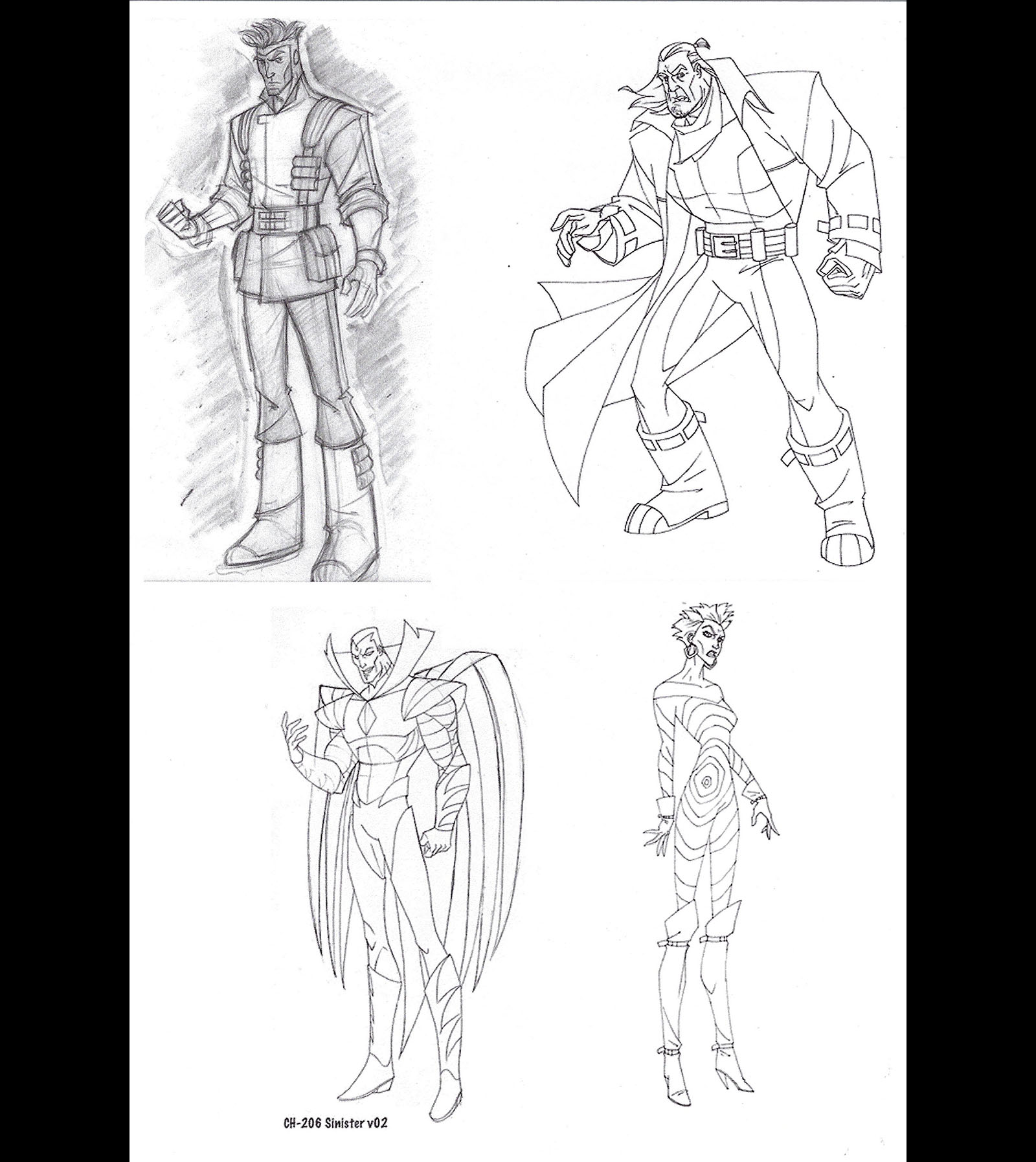Wolverine and the X-Men, 2008
I’ll start this one with a confession: I am not, and have never been, an X-Men fan. There, I said it.
I was certainly aware of X-Men when they were on the rise in the early 80s, but my attention was on other Marvel comics that I already liked. Despite all the fervor, I felt no urgency to see what I was missing. But I picked up the Teen Titans crossover in 1982, read it once, and never opened it again. I picked up the Phoenix Saga collection in 1984, read it once, and never opened it again. I no longer own either of them. I saw most of the movies, and even bought a few, but rarely look at them. I feel like I gave X-Men its chance and it didn’t turn me into a fan.
So how did I qualify to draw storyboards for an X-Men cartoon? Aren’t you supposed to clear a certain bar to even be considered for such a job? Yes, but that bar doesn’t measure how big a fan you are, it measures how skilled and adaptable you are at drawing storyboards. I’ve worked on a few DC shows in my day without being a DC fan. If you can adjust your technique enough to nail the style of a show and also deliver scenes that work on technical, aesthetic, and emotional levels, you’ve got what it takes. Oh, and you have to meet your deadlines.
In some cases (and you may have heard this elsewhere) it’s actually better not to be a superfan if you’re looking for work like this, unless you’re capable of checking that at the door and accepting someone else’s vision of the characters. From that standpoint, I was an ideal candidate since I had no stake in the story; nothing the writing team did would rankle or break me. My whole job was to visually interpret a script to the satisfaction of the director.
The only conflict I had to watch for, then, was clashing with the director. As a director myself, I have very specific ideas about how best to tell a story visually. If I ended up working for a director who didn’t like those ideas (something that’s happened to me before), it wouldn’t go well. Fortunately, I had nothing to worry about here.
First, some background on the show.
Following the disappearance of both Jean Grey and Charles Xavier, Wolverine becomes the new leader of the X-Men. The government organization MRD (Mutant Response Division) begins capturing mutants to “protect the safety of humankind.” Magneto responds by welcoming mutants to his island sanctuary Genosha. Mix in a dystopian future war and the Hellfire Club’s attempt to revive the Phoenix Force, and you got yourself a party.
As far as I can tell, the idea for this show was hatched in the mid 00s, funding was pulled together to license the X-Men from Marvel, and an independent production unit was established. This was before Disney bought Marvel and launched the MCU, so it was still a sort of Wild West where other studios could obtain the rights to make Marvel cartoons. Sony, for example, still had a lock on Spider-Man. Marvel was involved, but not to the degree they are now.
In this case, the licensor (a combo of two financiers) pulled in Nickelodeon as the broadcast partner and contracted with a fledgling studio called Kickstart Entertainment to handle the physical production. Kickstart hired the core team (supervising director, episodic directors, production assistants, etc.) and the race was on.
The year was 2008, at which time I’d finished working on Spectacular Spider-Man and was heavily involved with Batman: the Brave and Bold. My previous experience earned me a referral to an amiable fellow I hadn’t met yet named Nick Filippi. He was directing episodes, and invited me in to draw storyboards for him as a freelancer. With Spider-Man off the table, I had an opening in my schedule, so I was happy to accept. The first step was to visit the studio and meet the director whose team I would be on. That’s where I got my first surprise.
The studio didn’t look like any I’d seen before. It was located on a disused side street in Burbank, right next to a freeway. The nerve center was in a 2nd floor walkup that looked like a rented apartment. All three directors were crammed into what felt like a master bedroom, and everyone else was sharing space with somebody in the other rooms. Only Supervising Director Boyd Kirkland had a room of his own. Knowing how demanding that job is, I wouldn’t begrudge him a single square inch of it.
I respect studios that know how not to waste money. If you ask me to choose between a holiday party or a working photocopier, it’s no contest. But asking your core group to sacrifice personal comfort is something else entirely. When I saw the tight conditions Nick and the other two directors were placed in, they all won my instant sympathy. No privacy, no elbow room, and almost no opportunity to personalize their workspace.
Don’t underestimate the importance of that last factor; if you can’t surround yourself with things that inspire you creatively, all you’ve got is the work itself. If you begin to resent the work (almost inevitable) and you don’t have a relief valve, it’s a recipe for burnout. I was instantly glad to have a freelance role; my home studio was far more comfortable to work in.
Nick was in charge of eight episodes (out of 26). His first was already in progress when I joined up, so I contributed to the other seven, starting with Episode 6. Side note: the first three episodes had already been storyboarded by another studio but needed a lot of revision, so Nick’s first project was to help overhaul them. “Overhauling” happens a lot more in this business than you might think.
Nick and I are cut from very similar cloth. We both like to keep the atmosphere light when not working and 100% focused when we are. Unsurprisingly, our directorial instincts were exactly in sync. He was delighted with every storyboard I gave him, and was always happy to give me more. We’ve been friends ever since this experience, and we’ve accidentally run into each other a disturbing number of times. I expect this will continue.
Beyond that, the work I did should speak for itself. The scripts were all solid, the characters were easy to draw, and there were ample opportunities for high-impact storytelling. As I said before, being a fan was not a pre-requisite. I just needed to be a good storyteller. The directors were completely prepared to take on artists who knew nothing about X-Men, but I’d absorbed just enough to relieve Nick of that burden. Win-win.
The thing that wasn’t a win for anybody was the long term health of the series, of which the teeny tiny workspace seemed to be a symptom. The shows all got done, they got huge ratings on Nickelodeon (the strongest premiere in network history up to that time), and a second season was being planned, but a big shift in international exchange rates made it untenable for the financiers (based in India) to continue their investment. That’s the thing about being a Marvel licensor; you’re stuck with all the bills. If the show doesn’t pay for itself, you’re done. This is just one way you can score a very popular first season and still not get to do a second season.
Marvel itself had other things to focus on; Disney bought Marvel the same year Wolverine and the X-Men was broadcast (2009), and from then on they were much more focused on their own internal projects. I experienced that changeover while working on Earth’s Mightiest Heroes; suddenly, the show became subject to new rules about which characters could and couldn’t be used. Since the X-Men and The Fantastic Four were still under license to Fox, and since Disney didn’t buy Fox until ten years later, they were off the map. It was much simpler just to start up new shows under the new rules, which resulted in a production slate more closely tied to the MCU. This is what led to Marvel opening its own studio in 2012 and me getting to work there for eight glorious years. (See my articles on Avengers Assemble to read all about that experience.)
In the end, I have nothing but good memories of Wolverine and the X-Men, but I also recognize that this was from the privileged vantage point of a freelancer. If I had been on staff, working in a shoebox instead of an actual studio, this may have been a very different memoir.
Wolverine and the X-Men aired on Nickelodeon from January to November, 2009. The premiere set a record for ratings with over 3.5 million viewers, and another million tuned in for the second episode. Season 2 was announced, but did not go into production (no matter how many times I called up the producer at Kickstart to ask about it).
The series was released on six DVDs from April 2009 to August 2010, followed by a box set in October 2010. It is now streaming on Disney Plus.
RELATED LINKS:
Find all the episodes online here
Cancellation of series examined
Episodes I worked on
Finished storyboards are big stacks of paper that take up a lot of storage space, so I only kept one of them from this series. You’ll see it below. The rest are all thumbnail boards that show you the first draft that came out of my head. Comparing it to the finished footage will tell you a lot about the stages these projects go through.
Episode 6: X-Calibre
Nightcrawler stows away on a ship traveling to Genosha with other mutants, and are intercepted by “pirates” looking for fighters to take to Mojo. Nightcrawler battles the pirates but declines rescue by the X-Men, saying he wants to ensure the mutants make it safely to Genosha.
See the episode here.
My section runs from 6:15 to the end of Act 1. See the thumbnail storyboard here.
Episode 9: Future X
In the future, Professor X is captured by the Sentinels. Along with Domino, Bishop, Hellion, Marrow, and others, the Professor plans to break free from his captors. Meanwhile, Wolverine and the other X-Men search Bolivar Trask’s old lab for any info on Master Mold.
See the episode here.
My section runs from 10:15 to the end of Act 2. See the thumbnail storyboard here.
Episode 12: eXcessive Force
Cyclops, lamenting the loss of Jean Grey, believes Mister Sinister has taken her. He fights the Marauders with the help of the X-Men until he realizes Jean is not with them. An amnesiac Jean is revealed to be alive and well in a hospital, supposedly having been in a coma.
See the episode here.
My section runs from 10:00 (start of Act 2) to 14:30. See the thumbnail storyboard here.
Episode 15: Hunting Grounds
Mojo takes Nightcrawler and the Scarlet Witch from Genosha to put them in a violent gladatorial TV show to battle against a mind-controlled Wolverine. Spiral and the Reavers also appear.
See the episode here.
My segment runs from 7:30 to the end of Act 1. See the thumbnail storyboard here.
Episode 19: Guardian Angel
After furiously snapping at his father for developing a so-called “cure” for mutants, Angel’s wings are severely damaged at the hands of the MRD and are ordered to be cut off. However, Mr. Sinister then makes him a proposal that will change his life forever, transforming Angel into Archangel.
See the episode here.
My section runs from the start of the episode to 13:20.
See the storyboard here: Part A | Part B | Part C
Episode 22: Aces and Eights
Gambit arrives on Genosha to steal Magneto’s helmet as a provocation of war, seducing Polaris who unknowingly aids him in his task. Wolverine and Nightcrawler try to intervene and prevent the worst. Through the intervention of the X-Men, Magneto and Senator Kelly reach an understanding about their impending war and the dystopian future.
See the episode here.
My section runs from 10:30 to 19:00. See the finished storyboard here (part 1) and here (part 2)
Episode 25: Foresight Part 2
Emma discovers the Hellfire Club’s true motivation for using the Phoenix Force, and fights to free Jean alongside Cyclops. Magneto’s plan comes to fruition as Sentinels ravage Genosha, providing just cause for his war against humanity. In the future Professor X and the future X-Men are freed by Wolverine, and together they take up the fight against Master Mold.
See the episode here.
My first part: 1:40 to 9:20. See the thumbnail storyboard here.
My second part: 12:50 to 16:50 (end of Act 2). See the thumbnail storyboard here.
My third part: 21:25 to 23:20. See the thumbnail storyboard here.

